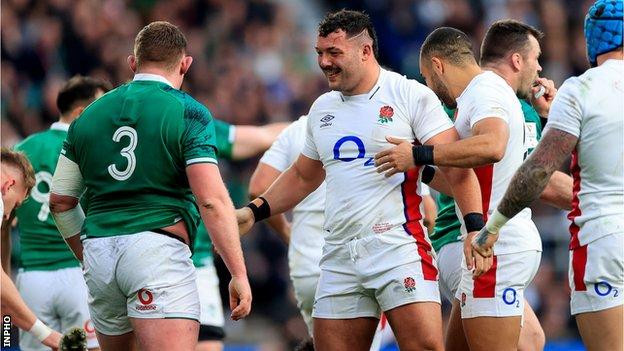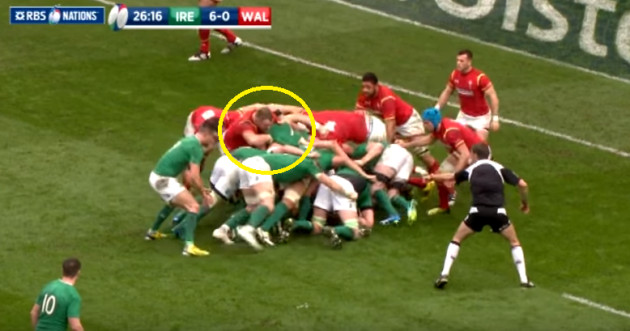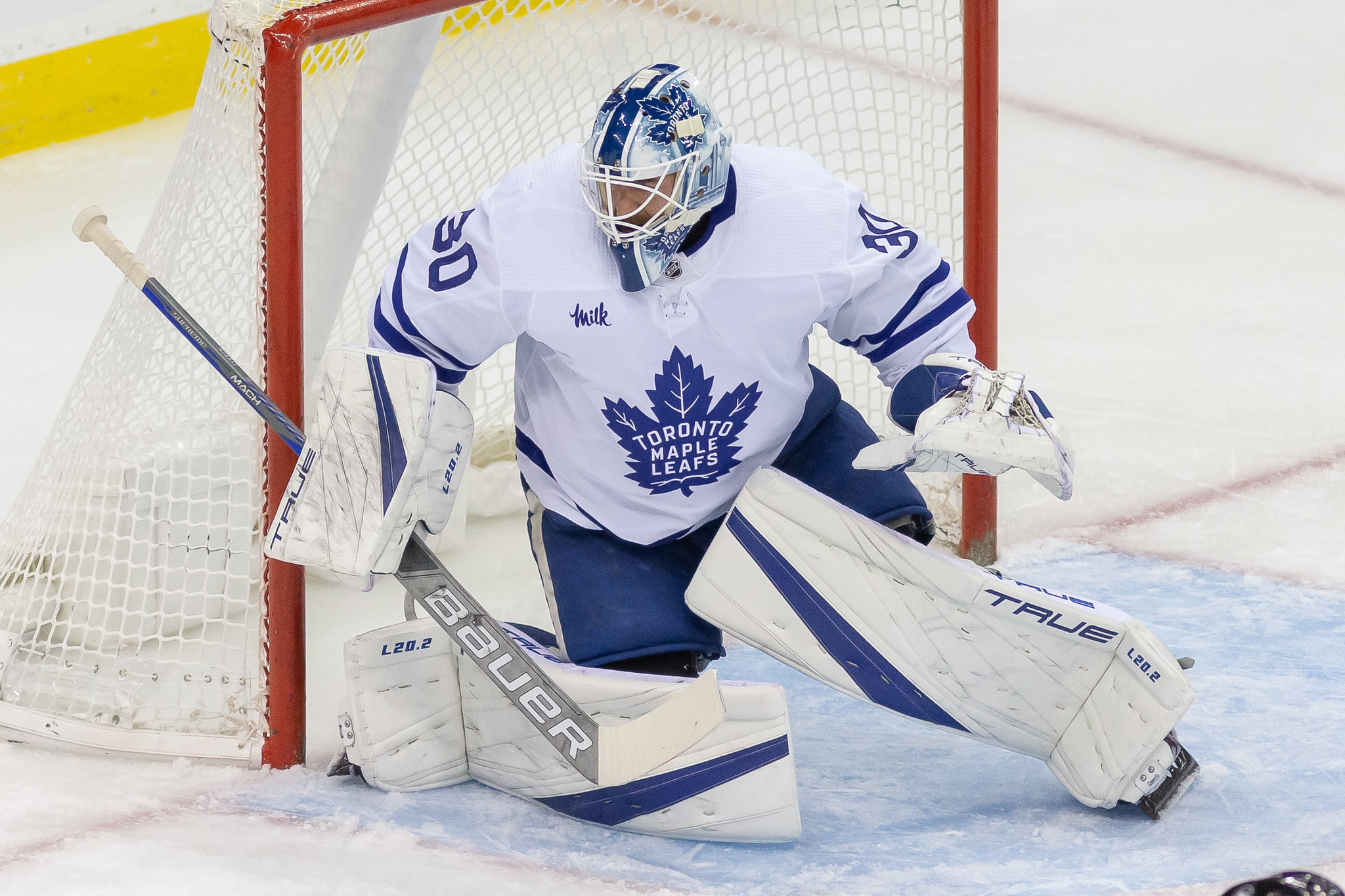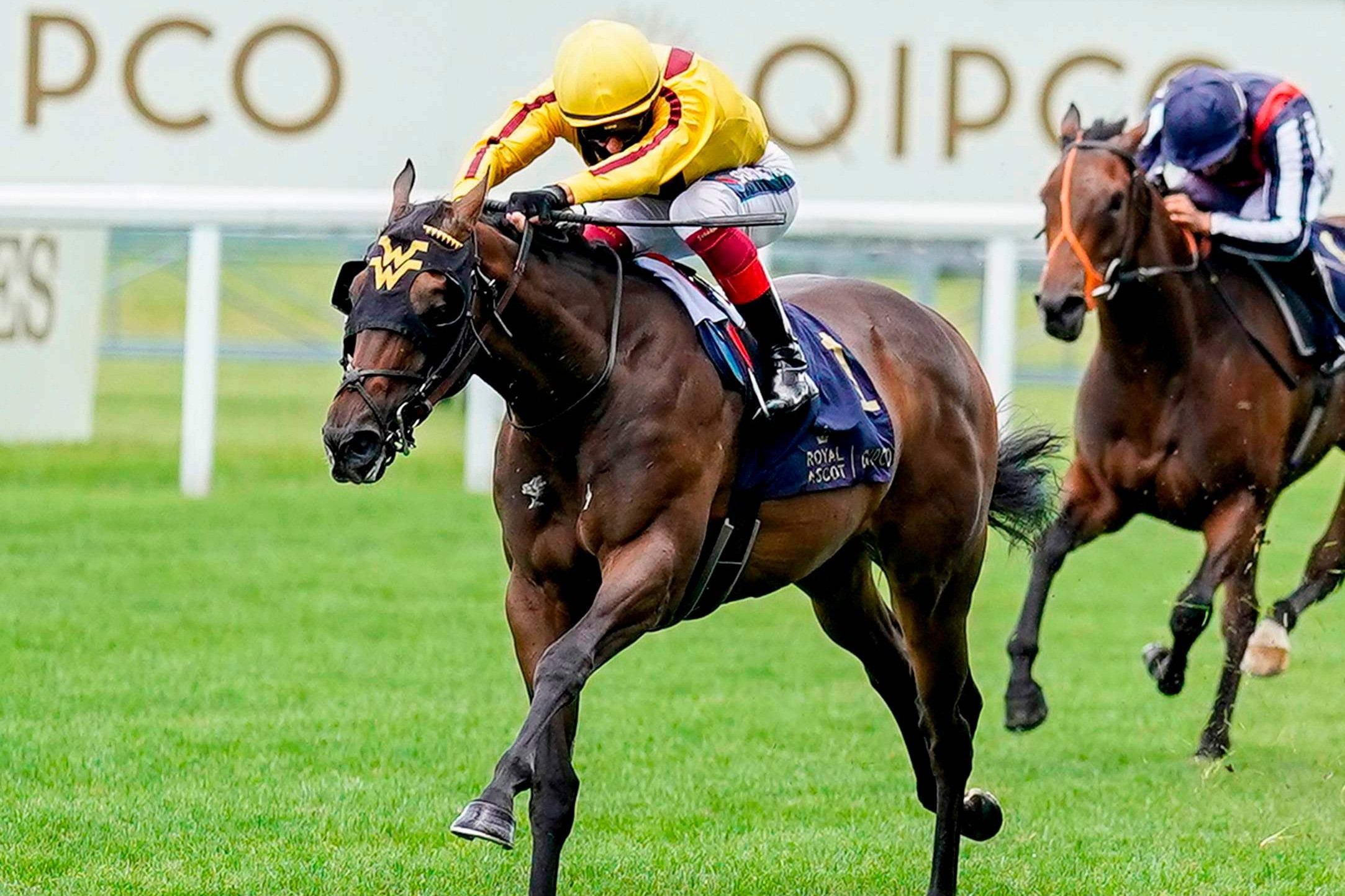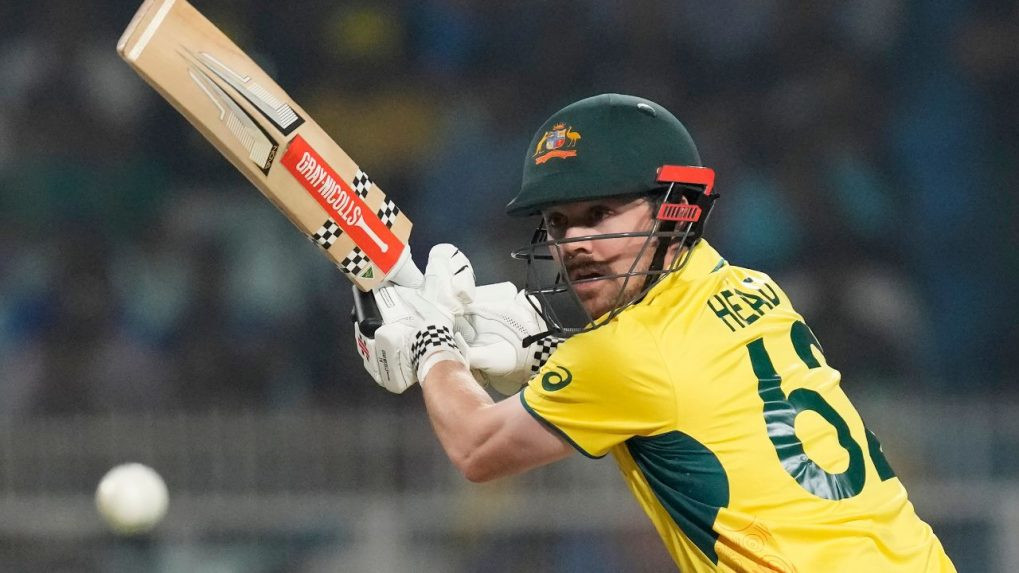Just two minutes into the World Cup quarter-final in Paris last year, the first scrum. Ireland ploughed forward through New Zealand and came up from the set-piece looking like they were ready to celebrate. Just outside the Kiwi 22 in a central position, it would have been a gimme three points. But Wayne Barnes blew his whistle but raised his right arm. Penalty against Ireland. The call came from the touchline around 20 metres away. With Barnes on the openside, assistant referee Christophe Ridley called in his view that Ireland loosehead Andrew Porter had driven on the angle. Porter and Ireland were deeply frustrated and maintained post-match that Kiwi tighthead Tyrel Lomax had initiated that inward movement under pressure from Porter.
There was another penalty against Porter early in the second half with New Zealand feeding into a scrum on their own five-metre line, right in the corner. It was a big pressure position, Ireland having got back within a point on the scoreboard, but Barnes’ whistle signalled a lifting of that stress. Again, Porter was done for boring.
The third scrum penalty came in the 66th minute, the Irish scrum pinged for wheeling. Jordie Barrett missed that long-range shot at goal but Ireland conceded a penalty off their 22-metre restart and Barrett made it 28-24, the final scoreline.
Afterwards, Ireland felt aggrieved about the scrum interpretations so the scrum battle in tonight’s meeting with the Kiwis was always going to be fascinating. “They’ll feel pretty hard done by. I certainly do every time I get penalised,” said Lomax this week when asked to reflect on the scrums in that World Cup quarter-final.
New Faces in the Front Row
There are a few different faces in the starting front rows this time. Lomax is the only survivor in the Kiwis’ starting front row, with Asafo Aumua in at hooker for the injured Codie Taylor and the gigantic Tamaiti Williams preferred to Ethan de Groot at loosehead despite de Groot being available after an internal suspension for breaching team protocols.
“That’s a performance decision,” said All Blacks boss Scott Robertson of his big show of faith in Williams.
Williams came off the bench against Ireland last year along with hooker Dane Coles and tighthead Fletcher Newell, neither of whom are involved tonight.
The twice-capped George Bell, still only 22, backs up Aumua but Ireland will be wary of 140kg+ replacement tighthead Pasilio Tosi, who did notable damage off the bench against England last weekend. Formerly a back row, Tosi brings major power in the carry, tackle, and set-piece. He has been a real find for the All Blacks.
On the other side, Dan Sheehan is missing at hooker for Ireland but Rónan Kelleher is fit to start and is regarded as a strong scrummaging hooker. Porter is still in situ but tighthead Tadhg Furlong is another to miss out on account of his hamstring injury. That means Finlay Bealham comes into the starting XV for Ireland on the occasion of his 43rd cap.
“He [Furlong] is world-class so we see some opportunities in it, yeah,” said Robertson of that change for Ireland. But Andy Farrell and co. have faith in Bealham’s ability to do the job tonight. “I think was it 2023 when Tadhg was gone for the majority of the Grand Slam Six Nations and Finlay was unbelievable,” said Ireland captain Caelan Doris. “He took his performances to another level and I think he’s stayed there pretty consistently off the bench when Tadhg’s there or starting in his absence. Yeah, we’re looking forward to seeing that from him.”
Kelleher was the bench hooker last time, so Ulster’s Rob Herring fills that slot tonight as he gets set for his first appearance of any kind since the second Test in South Africa back in July. Cian Healy, who missed the World Cup, is the back-up loosehead and will draw within one cap of Brian O’Driscoll’s all-time Irish record if he gets on, while 26-year-old tighthead Tom O’Toole gets one of the biggest chances of his Test career so far. O’Toole has played against the All Blacks before, coming off the bench in the first Test defeat in New Zealand in 2022, but it will surely be special on home soil.
Beyond the Scrum: A Deeper Look at the Set-Piece
The power of Joe McCarthy and James Ryan from the second row will be as important as ever, while Iain Henderson offers more of that as the bench lock. It should be an intriguing contest as Ireland look to right some perceived wrongs and the Kiwis attempt to take things up a level.
“We’ve definitely got a little bit more left in us,” said Lomax. “I thought the way the bench came on and changed the game in the scrum [last week against England] was awesome. As starters, laying a good platform for the backs and trying to assert a bit of dominance early will be key.”
One year and one month on, that World Cup quarter-final is no easier to revisit, and when analysing the causes of Ireland’s defeat, their set-piece was undoubtedly a big factor which they have clearly identified when the sides meet again at the Aviva.
On another night Ireland might have won regardless, and the equally epic quarter-final between France and South Africa the following day could easily have gone either way too and, no less so, the All Blacks could well have won the final. The best sides don’t always win knock-out tournaments.
Therein lay the rub with that World Cup. Two of the best four sides in the tournament had to follow each other out of the tournament on that third last weekend of the tournament. But, with the margin always going to be wafer thin, Ireland’s set-piece needed to be closer to perfection.
Going into the quarter-final the All Blacks repeatedly reminded themselves that they didn’t have to be the best team at the World Cup or in the world, they just had to be better on the night. To that end, once again their lineout had a 100 per cent return, as it did until a couple of blemishes in the final. Also to that end, their handling errors were so scarce that Ireland didn’t have one scrum on their own put in.
Furthermore, of the All Blacks’ five scrums, Andrew Porter was penalised on three of them by Wayne Barnes. Certainly Porter himself was haunted for months by Barnes’ interpretations, and afterwards it was clear that Andy Farrell, Paul O’Connell and Peter O'Mahony did not agree with the English official.
Lineout Woes: A Deeper Dive into Ireland’s Set-Piece Challenges
The statistics will show that Ireland only lost three of their 14 lineouts in the quarter-final, yet what must have particularly frustrated O’Connell, James Ryan, Tadhg Beirne, Peter O’Mahony and co is that so many of Ireland’s lost lineouts at the World Cup were in the opposition 22, especially in the pool win over South Africa. Twice they went to the corner in the opening 25 minutes against the All Blacks only for Brodie Retallick and Shannon Frizell to pick off Dan Sheehan’s throws. How differently might the quarter-final have panned out otherwise?
Ireland’s overall 82.5 per cent lineout success was ranked 13th out of the 20 teams in the World Cup, having been fourth in defending their Six Nations title with an 85.7 per cent success rate. Against that, it should be pointed out that Ireland’s defensive lineout was very good. Their 12 steals was bettered only by England, South Africa, and New Zealand, while only Argentina had a higher percentage of steals on the opposition throw than Ireland’s near one-in-four.
What’s particularly relevant about all of this is that Ireland score more tries off their lineout than most teams, and ultimately in that quarter-final their lineout clicked in the second half, earning a penalty try, as well as a yellow card for Codie Taylor, before Ronan Kelleher was held up over the line by Jordie Barrett. But for the future Leinster centre’s intervention that night, Ireland’s lineout maul would have been hailed as the primary reason for an 18th win in a row and a place in the semi-finals.
Kelleher’s fitness, along with Taylor’s absence, looks significant this evening, not least in the context of the lineout. Asafo Aumua is a powerful, mobile, energetic hooker but doesn’t have Taylor’s throwing experience and Tupou Vaa’I is a wonderful lineout operator who had to be sacrificed for the injection of Patrick Tuipulotu in the final quarter against England last week.
Ireland’s lineout usually functions better with James Ryan, who has become a world-class operator on both his own throw and the opposition’s, while O’Mahony will heighten that threat in the final 20 or 30 minutes at the Aviva this evening. Furthermore, in the absence of Tadhg Furlong, recalling Iain Henderson to the bench looks like it has in mind adding some horsepower to the Irish scrum and maul.
Can Ireland Overcome the Ghosts of the Past?
The match against New Zealand is not just about the scrum; it’s about how Ireland can learn from the past and put in a complete performance. They must avoid costly errors and ensure their lineouts are consistently strong. They also need to keep a cool head under pressure and avoid getting caught up in the heat of the moment. Ultimately, Ireland’s performance will determine whether they can overcome the ghosts of the past or if they’ll once again be haunted by the scrum.




